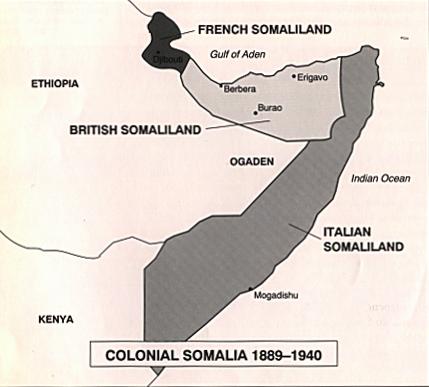Somali Independence |
In 1960, after several decades of colonial rule, Britain gave independence to the British Somaliland, Italy gave independence to the Italian Somaliland, and France gave independence to the French Somaliland. The British and Italian Somaliland regions joined together to form the country of Somalia while the French Somaliland became Djibouti (5). The clans now had the responsibility of organizing a government for the two regions uniting as Somalia. The new country implemented a system of parliamentary democracy in which freedom of expression was a key element. The government was to consist of a president as head of state and a Prime Minister who had full executive powers. The Prime Minister would answer to an elected National Assembly of 123 members representing the two former colonies (6). The new government, in which Somali traditions were combined with western governmental practices, offered political and legal equality to all Somalis,
| regardless
of their clan, class, or profession (7).
At the time of independence, the two former colonies were still different institutionally, and the two systems were gradually integrated over the next four years. The clans formed political parties in order to compete for power in the new government. The two major parties that formed were the Somali Youth League (SYL) and its opposition party, the Greater Somali League (GSL). The SYL drew its supporters from the Darod clan, while the GSL was supported by the Dir, Hawiye, and Issaq clans (8). In 1962, factions of both parties combined to form a new party, the Somali National Congress (SNC). This party had support in both the north (former British Somaliland), and the south (former Italian Somaliland). This gave the new Somali state three major political parties (9). |
 |
In 1967, Abdirashiid Ali Shermaarke was elected as president. He nominated Muhammad Abraham Igaal, of the SYL, as Prime Minister. The SYL had clearly become the dominant political party of Somalia. Some people who were discontent with the results of recent elections began to make charges of election fraud (11).
It was found that Prime Minister Igaal had stolen over five million dollars from the national treasury in order to buy votes. By 1969, the SYL had control of 120 of the 123 seats in the National Assembly (12). Somalia, just nine years after gaining independence from colonial powers, had become a corrupt one-party state.